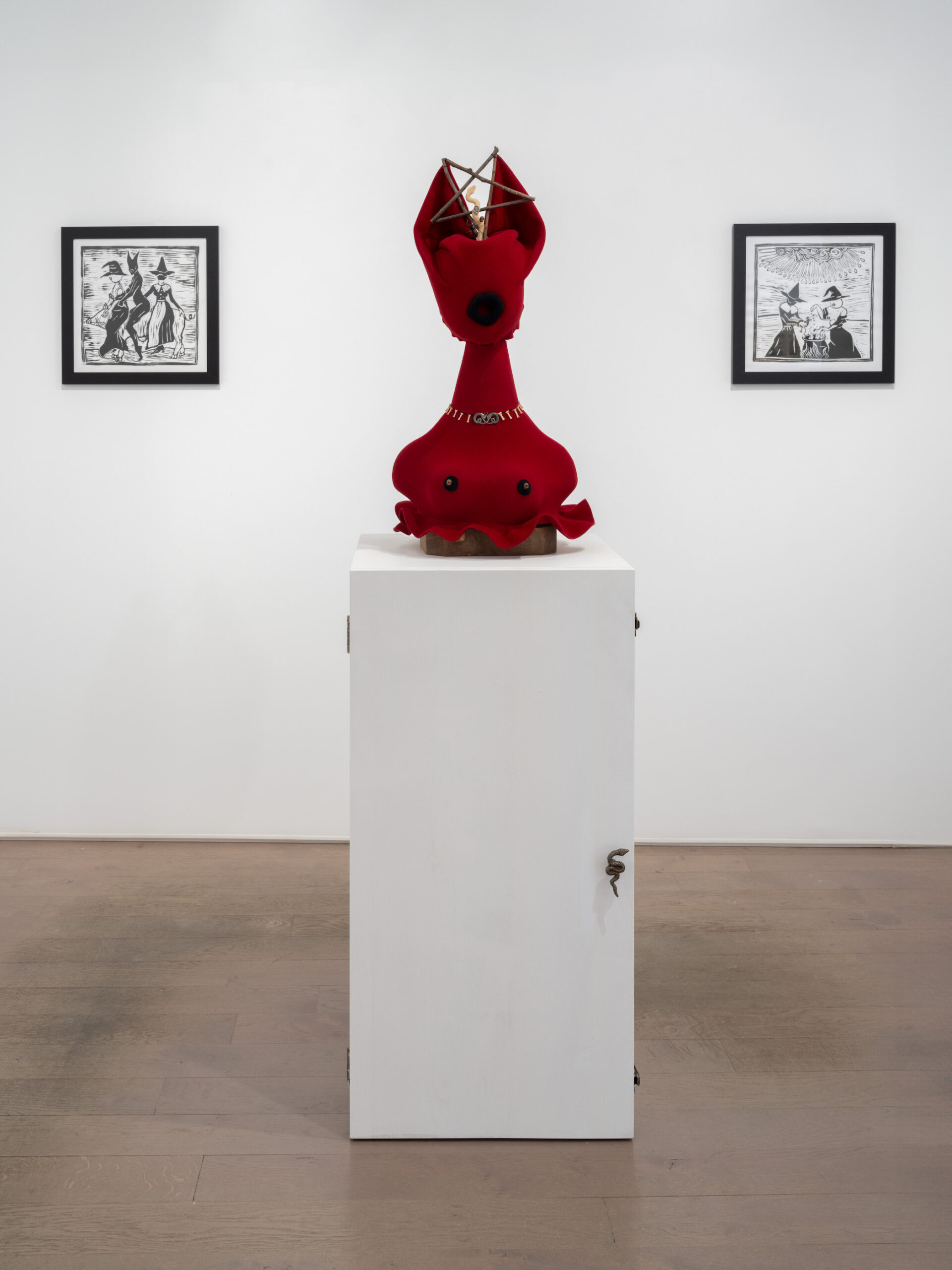July 01, 2025
In Conversation at newcube's art residency: Ryan Wilde, Brigitte Mulholland & Bibi Zavieh
Article by newcube
7 min. read
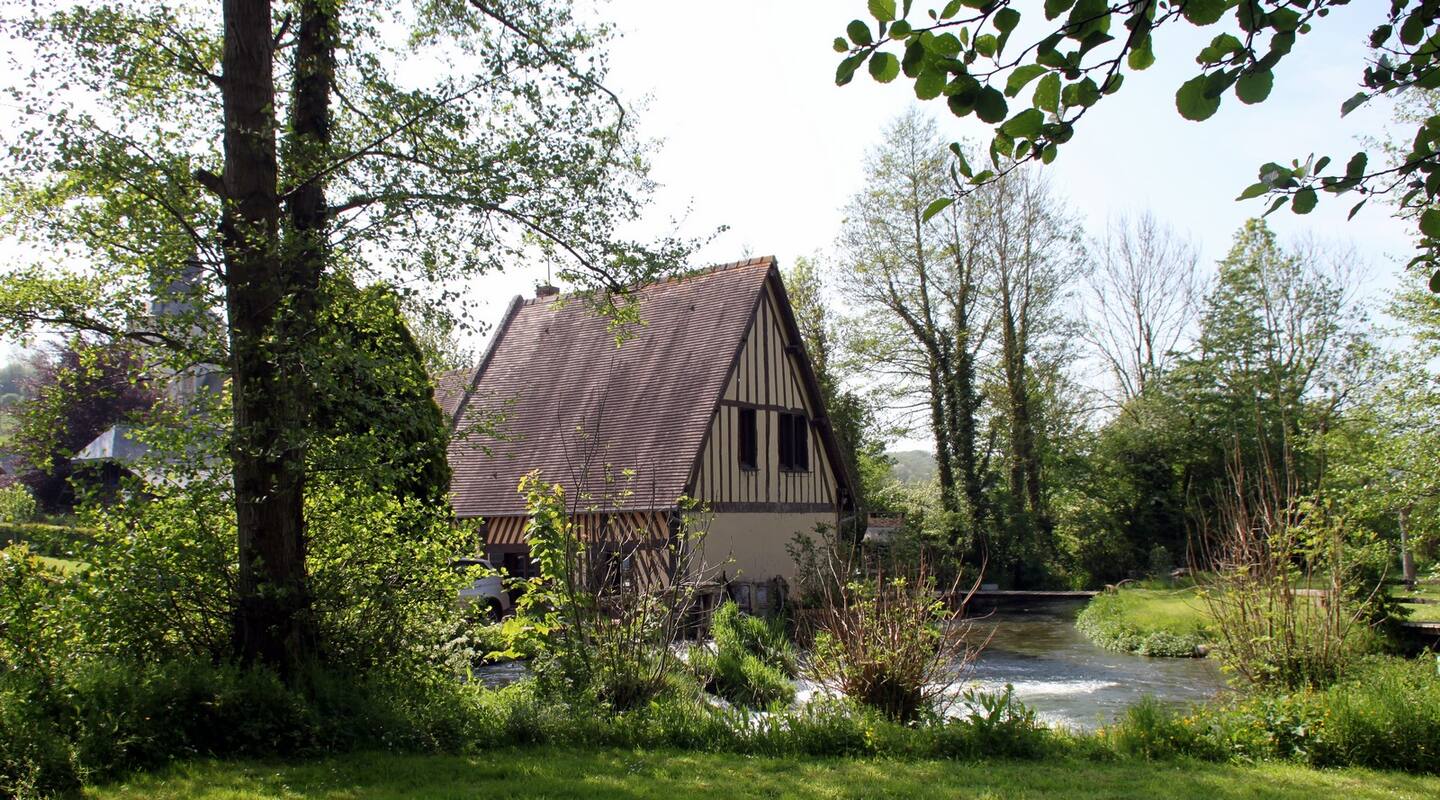
As part of the newcube’s sought after artist residency in Normandy, we brought together artist Ryan Wilde and gallerist Brigitte Mulholland for a “river-side” chat. Both are shaping thoughtful, materially driven practices, one as a multidisciplinary artist, the other as a gallerist. What follows is an open conversation between the artist, her longtime collaborator, gallerist and friend, and newcube’s founder on their respective creative evolution, working with care, building a life in and around art and the newcube residency in St-Martin-le-Gaillard this summer.
newcube: Ryan, we’re so excited to host you for this year’s newcube art residency in Normandy. You have just arrived and you will be spending a few weeks in the old mill, in the small village of St-Martin-le-Gaillard. As we start this chat, can you tell us a bit about your artistic journey and how you arrived at your current practice?
Ryan Wilde: Thank you newcube, I’m also so excited to be here. Over the course of my career, my journey has taken several unexpected turns. I began as a ballet dancer, training at the School of American Ballet, but a career-ending injury forced me to pivot. I studied fine art photography in college, where I became fascinated with visual storytelling through the body and costume. This led me to millinery, where I found a tactile, sculptural language that combined craftsmanship, theatricality, and identity. For over a decade, I worked as a milliner, creating hats for fashion houses, celebrities, and opera productions. But over time, I grew disillusioned with the fashion industry’s commercial pressures. I wanted to slow down, ask harder questions, and explore the deeper psychological and cultural meanings embedded in adornment. My current work repurposes millinery techniques and materials into sculptural forms that interrogate gender, labor, and the politics of visibility, drawing from both personal history and theoretical research.
newcube: Brigitte, how about you? How did you get started in the art world? What was your path to becoming a gallerist?
Brigitte Mulholland: I did a few internships while I was in college, including at the Metropolitan Museum of Art. I had originally thought I would do a PhD and get married after undergrad, but thankfully came to my senses a few months before graduating and put an end to both of those plans. I moved to Brooklyn with some friends and a few hundred dollars in my bank account, and just applied to all of the entry-level art world jobs on NYFA. I ended up getting a job at a small secondary market gallery on the Upper East Side, where I started moving up the ranks and learning a ton. I stayed there for about seven years, ultimately becoming Director.
newcube: you moved to Paris about a year ago, how did you end up moving to France and opening your gallery?
Brigitte Mulholland: I loved my time in New York and never thought I would leave, especially after the pandemic and being surrounded by such a great community of friends and artists, like Ryan. But Paris has always really had my heart. When I did my first visa application, I counted all of my passport stamps and saw I had been to France 45 times between 2008 and 2024. It had always seemed like a pipedream, but something shifted. I realized I missed Paris when I was in New York – and didn’t miss New York as much when I was in Paris. I was at a personal and professional crossroads. During one session with my therapist at the time, she asked me what I would do if I had all the money in the world. I said, “Open a gallery in Paris.” She paused and said, “Well then, why don’t you just do that?”
I found the gallery space in a very serendipitous way as I was walking past a storefront on rue de Turenne. The agent showed me an off-market space he was vacating, and when I walked in, I saw that the exterior was the same shade of turquoise I had used to paint my house. My best friend Sean Fader (who might join Ryan a few days at the residency) was with me and found a photograph of Mulholland Drive hanging on the wall. That sealed it. I told the agent I’d take it.
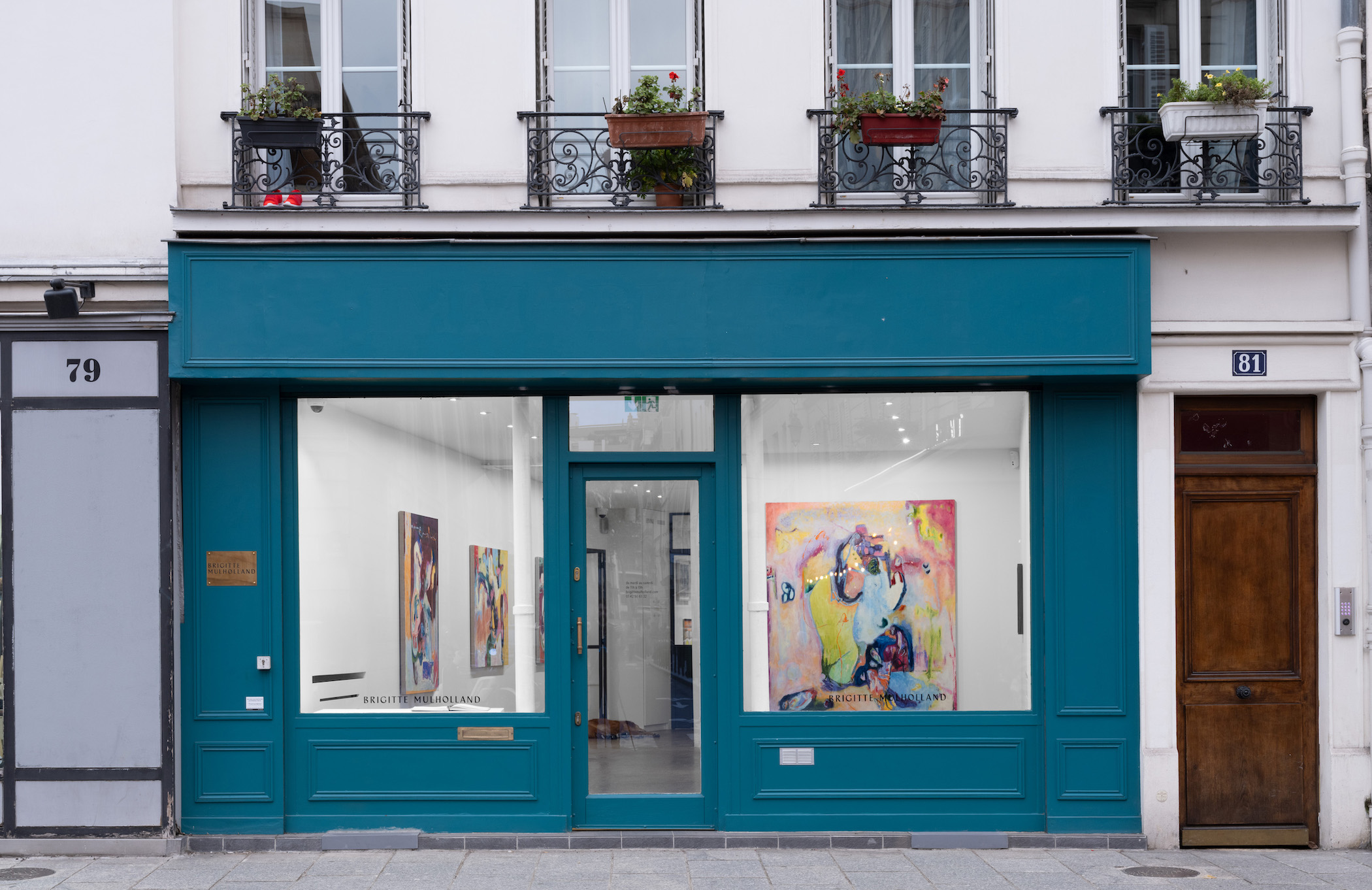
newcube: That really sounds like it was meant to be! And I absolutely love the energy there is in that space! Ryan, back to you, what drew you to themes like theatricality, gender, and the symbolic weight of clothing?
Ryan Wilde: I’ve always been aware of how clothing shapes perception, how it can protect, seduce, conceal, or expose. Having grown up surrounded by performance and illustration (my father was an artist for Playboy), I understood early on how women’s bodies were often stylized, exaggerated, and commodified. Theatricality and fetishization aren’t just surface-level; they’re tools of power, control, and sometimes survival. I’m interested in the tension between autonomy and objectification, and how clothing becomes a site where that tension is negotiated. I’m also fascinated by how identity is performed and consumed, how a nurse’s uniform, a bunny suit, or a veil can communicate entire histories or ideologies.
newcube: Brigitte, you’ve said that seeing Ryan’s witch works sparked a kind of urgency. Can you speak more to that?
Brigitte Mulholland: In a lot of ways, I accelerated the timeline for opening my gallery because I saw the work Ryan was making about witches, and would have been insanely jealous if any other gallery got to show it. A lot of the artists I work with are people I’ve wanted to work with for years – and now that I’m the boss and make those decisions, we do. It’s a lot of fun. In addition to how lucky I have been to know and meet all of these amazing artists over the years including Ryan, my process for the roster and curation of the gallery is quite intuitive, especially after so many years of experience – a lot of it is just seeing something that grabs me, and knowing that I want to show it. I do have a tendency to work with women and queer artists, as that is just the work that resonates with me the most, and they’re also the people I generally want to spend the most time with.
newcube: Ryan, how would you say your background in millinery has shaped your current approach?
Ryan Wilde: Millinery gave me a deep respect for process, precision, and material intelligence. It taught me how to shape form from tension, steam, wire, felt, buckram, and binding: all methods of coaxing something soft into something structural. I still use these materials and tools, but I like to recontextualize them to tell different kinds of stories. The head remains central in my work because it’s both intimate and public, a site of identity and spectacle.
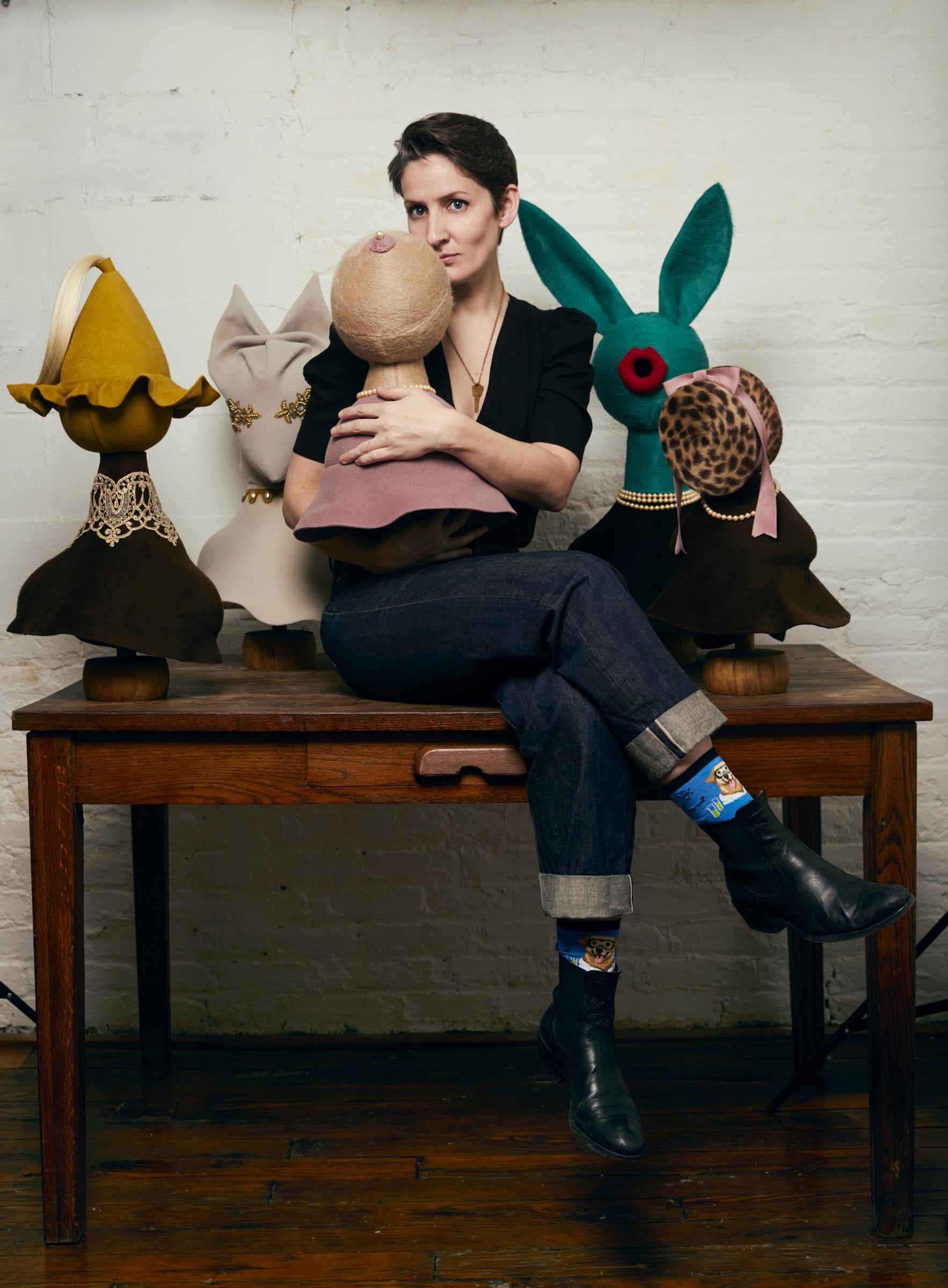
newcube: What made you interested in applying to the newcube artist residency in Normandy?
Ryan Wilde: I was drawn to newcube’s residency for its rare combination of quietude and conceptual openness. The rural setting offers the kind of stillness that’s difficult to access in city life, especially as someone navigating both artistic production and daily survival in New York and Paris. I’m excited by the opportunity to slow down, step outside the demands of deadlines and exhibitions, and enter a space that encourages material experimentation and sustained thinking. I also was drawn to the residency focusing on family, and I wanted to attend with my extended family and friends which is rare – or impossible – in any other residency program.
newcube: Are there specific projects you will be focusing on during the residency?
Ryan Wilde: I’ve been writing a book for the past year that weaves together personal narrative, feminist theory, and the cultural history of clothing. At St-Martin-le-Gaillard, I’m excited to finally consider the book not only as a text, but as an object. I plan to begin exploring ideas for its physical structure, including small-scale wood carving, hand-stitched elements, and embroidered pages or covers.
newcube: How does this quieter environment impact your work?
Ryan Wilde: A rural setting allows me to recalibrate my pace and attention. My work often involves intricate, time-intensive techniques, such as embroidery, hand carving, and book-making, that require stillness and deep focus. In a natural environment, I’m less distracted by the demands of visibility and productivity that dominate urban life. The physical quiet and spatial openness make room for conceptual clarity.
Being in the countryside also shifts how I relate to scale, encouraging me to think more intimately, more slowly, and with greater care toward material. It offers a space where thinking and making can converge organically, and where small gestures, like a stitch or a carved line, can feel expansive rather than peripheral.
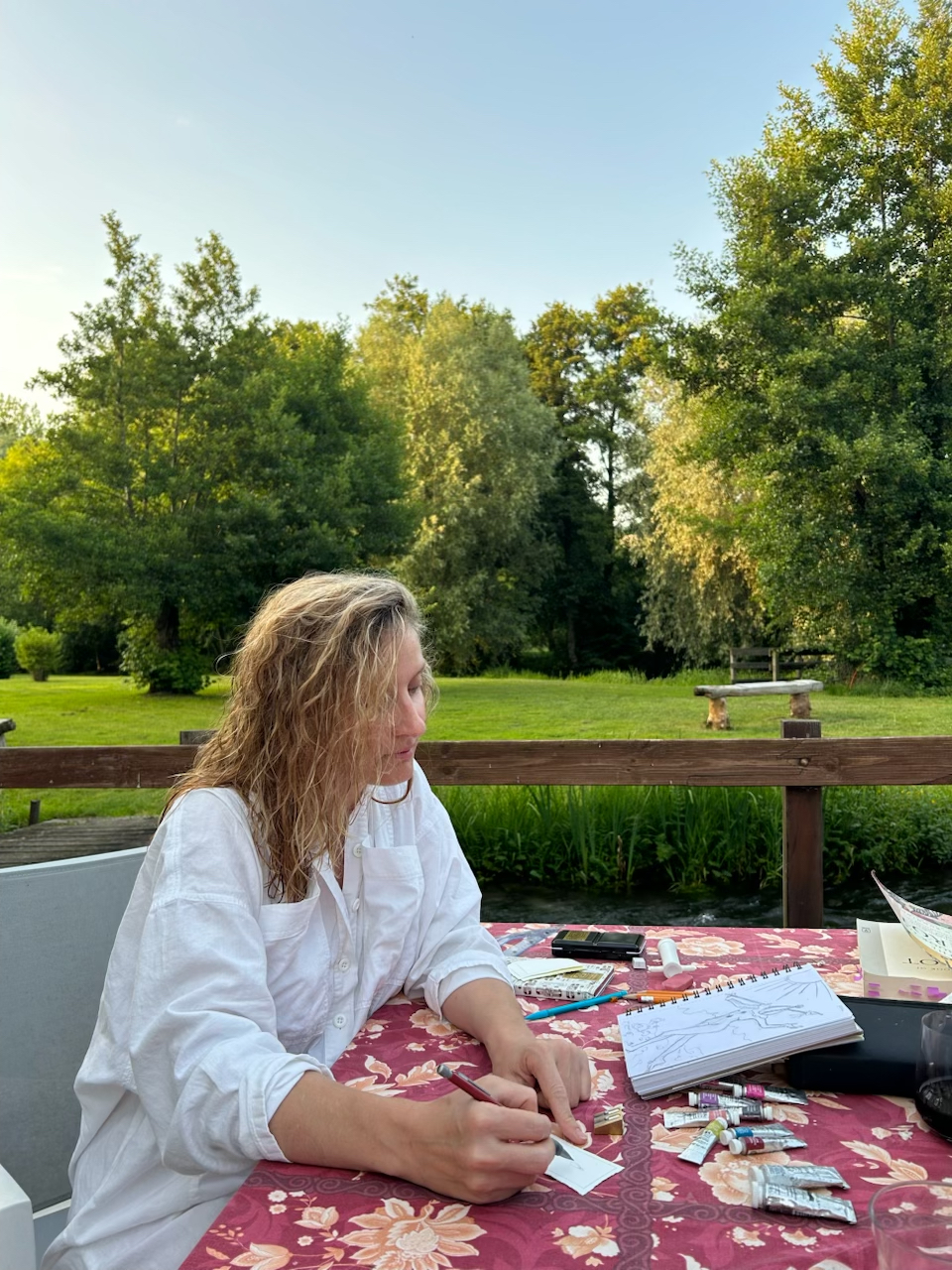
newcube: Brigitte, as a gallerist who has supported artists throughout their careers, what advice would you give to emerging and mid-career artists?
Brigitte Mulholland: You have way more power and agency than you think. Galleries don’t exist without artists – don’t ever forget that. Trust your instincts, and don’t let insecurity guide your decisions. And most importantly: there’s not a single artist in history who’s only ever gone up. Look at the long game. Keep your studio practice sacred. Know who you are and protect that through the ups and downs.
newcube: And for those considering opening a gallery?
Brigitte Mulholland: You have to really want to do it. It’s hard – of course it’s hard – but if you really want it, absolutely do it, and enjoy it for everything that it is. I knew I was opening in a down market, and pushed ahead because of it. Galleries that start in tough times often last the longest, because you learn to adapt. There are ups and downs, but if you’re doing it because you love it, that’s the only reason that really matters.
newcube: There’s a sense of rebirth in the French art scene these days, many galleries have opened spaces, auction houses have expanded their team in Paris, collectors pick Paris over London (or even Basel) during fair season, the Parisian art scene seems to be thriving. Have you felt a shift in any way?
Brigitte Mulholland: Absolutely. After so many years of coming to Paris, the city feels palpably different in the past few years, especially the art scene. I think Brexit really changed it as well, and a lot of galleries opened outposts here as a result. Art Basel coming in has also taken the city’s position in the art world to a new level. There are a lot of French galleries – blue chip, established, and even younger ones, who are extremely successful and interesting and have an important voice in the international art world. It’s truly becoming a major player, and also people just love coming to Paris – now that there is a real art scene here, it’s another wonderful reason to visit.
newcube: How do you feel the French market is different from or similar to the American market?
Brigitte Mulholland: In general the market is an international one, and there is still a lot of outreach done over email and social media. In terms of foot traffic, it is nothing like it is in New York – a fraction of the day-to-day numbers – but I really like that about the market. There isn’t as much of a frenzy, and the quality of life is slower and nicer. French collectors are extremely thoughtful, and they take their time, which I really love. I have a number of collectors here already, and have met some really amazing new ones as well. They all take their time, love to spend time, and I have incredible conversations with them.
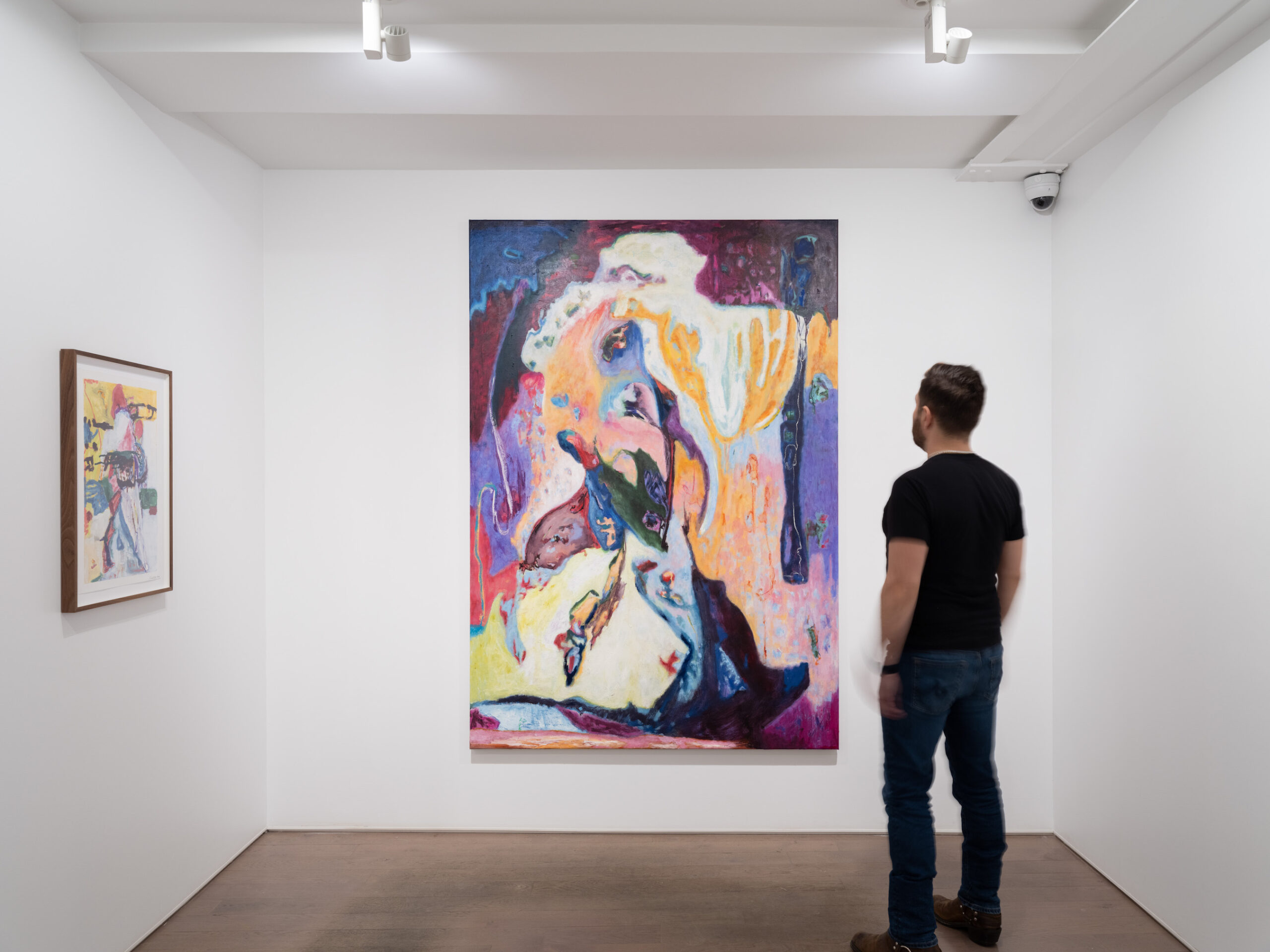
newcube: Back to you now Ryan, when you are in your studio, what’s a typical day of work like?
Ryan Wilde: My studio days are loosely structured. I usually begin by writing, sometimes refining ideas for works in progress, sometimes just observing how I’m thinking. From there, I move between handwork and sketching: steaming felt, shaping buckram, carving wooden forms, or playing with new material. These repetitive gestures help clarify the larger conceptual structure of a piece. I often work in silence, listening helps me think through rhythm and tone. I like having multiple entry points into a workday: physical labor, critical thought, and tactile response.
newcube: you will certainly have a lot of silence at the residency (if the rooster allows!). How do research and historical references play a role in your making?
Ryan Wilde: That rooster is mad!!! But we’re so happy to be here. Jokes aside, research is really integral to my process. I’m constantly pulling from historical texts, medical illustrations, fashion ephemera, feminist theory, and archival imagery. As Brigitte briefly mentioned early, my work often responds to historical garments or roles, like nurses, witches, or performers, whose identities were shaped or obscured through clothing. I don’t aim for historical accuracy, but rather emotional or symbolic resonance. Research helps me excavate visual and ideological codes embedded in materials and forms. It gives depth to the surface and allows the past to quietly haunt the present in the work.
newcube: Who or what are some key influences on your work right now?
Ryan Wilde: Lately I’ve been deeply influenced by time spent in archival and museum spaces like the Morgan Library, the Frick Collection, and the New York Public Library’s special collections. I find myself drawn to objects that weren’t originally framed as art, hand-bound books, devotional textiles, ornamental tools, especially those made by women whose work was historically dismissed as domestic, decorative, or anonymous. These fragments carry not just aesthetic weight, but evidence of lived attention, of care and constraint in equal measure. I’m interested in how those gestures persist, quietly, across centuries.
newcube: Are there any texts, films, or visual references that have recently inspired you over the years?
Ryan Wilde: I’ve been reading and re-reading texts by and about women who made things in isolation or under erasure, craft artists, nuns, embroiderers, women who made books with no intention of publishing. The material and conceptual intimacy in those objects moves me. I’m also inspired by artists like Jamie Kamph, Leonora Carrington, and Louise Bourgeois, who collapsed boundaries between writing, weaving, painting, and sculpture. Visually, I’ve been studying early manuscripts and medieval costumes, not necessarily for historical accuracy but for the way those forms telegraph meaning through silhouette, pressure, and repetition. I’m interested in what we inherit, visually, materially, symbolically, whether we recognize it or not.
newcube: Looking Ahead, are you two working towards a collaboration?
Ryan Wilde: Yes, I’ll be doing a smaller solo presentation with Brigitte Mulholland next year, which I’m really excited about. Brigitte has been an incredible champion of artists working across disciplines, and our conversations always push the work conceptually. I’m also participating in a few other exhibitions that take a more playful approach; exploring costume, character, and narrative through sculpture and installation. I’m interested in showing work that blurs the line between object and persona, especially as it relates to clothing and constructed identity.
This residency will allow me to think and work in ways that are slower, more tactile, and materially experimental, something difficult to do amid the logistics of preparing for shows. I’m hoping to use this time to deepen the conceptual structure of my book project and to explore new formats, like embroidered pages and carved covers. I also see this as a chance to develop smaller sculptural works and studies that might inform future large-scale pieces. Ideally, what begins at St-Martin-le-Gaillard becomes the quiet foundation for much more public work in the coming year, work that’s been metabolized, not rushed.
newcube: Well, we cannot wait to see the result of these few weeks! Let’s end with a few quick questions.
A material you can’t live without?
Ryan Wilde: felt
newcube: An artist you’d love to share a studio with?
Ryan Wilde: Nick Cave lol
newcube: One word to describe how you’re approaching this residency?
Ryan Wilde: Enthusiastically
newcube: Thank you to both of you! It’s such a pleasure working alongside such wonderful women in the art world. We truly believe the best comes out of collaboration between people in the art world and we’re really so proud and excited to partner with you both this summer. We very much look forward to seeing’s what’s ahead and how this residency program will impact all of us. Ryan, enjoy your time at the residency and see you both soon!
